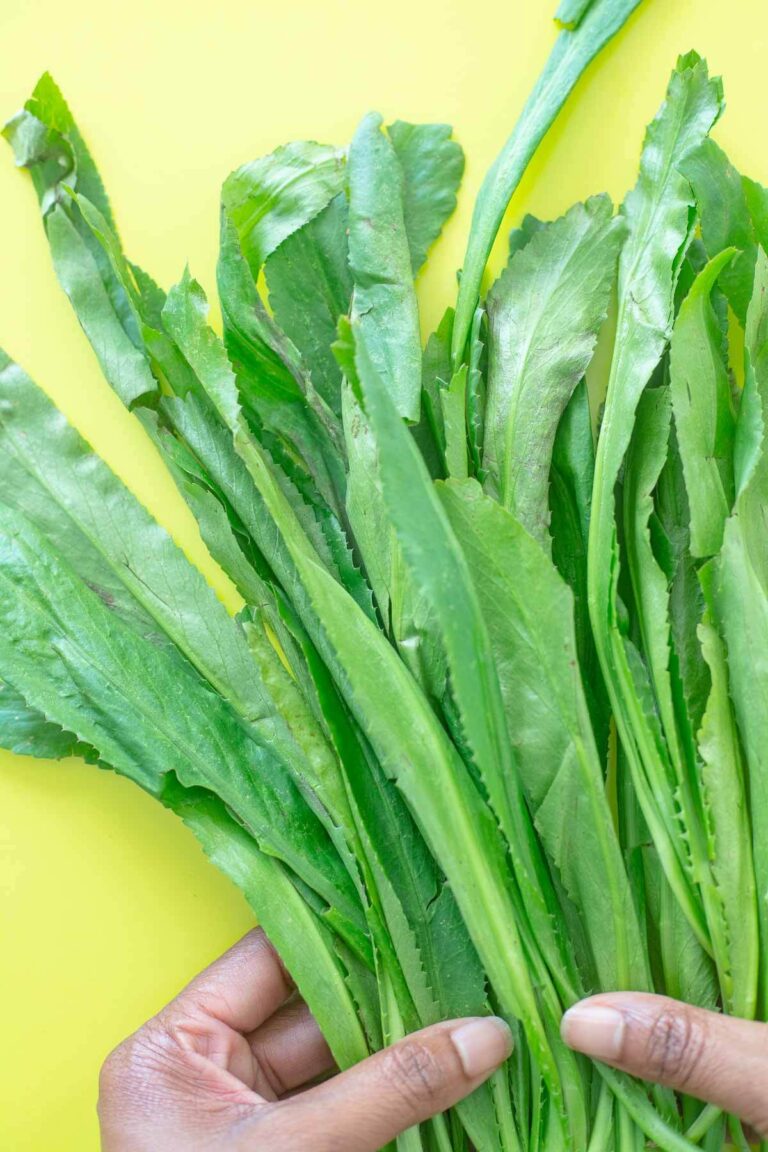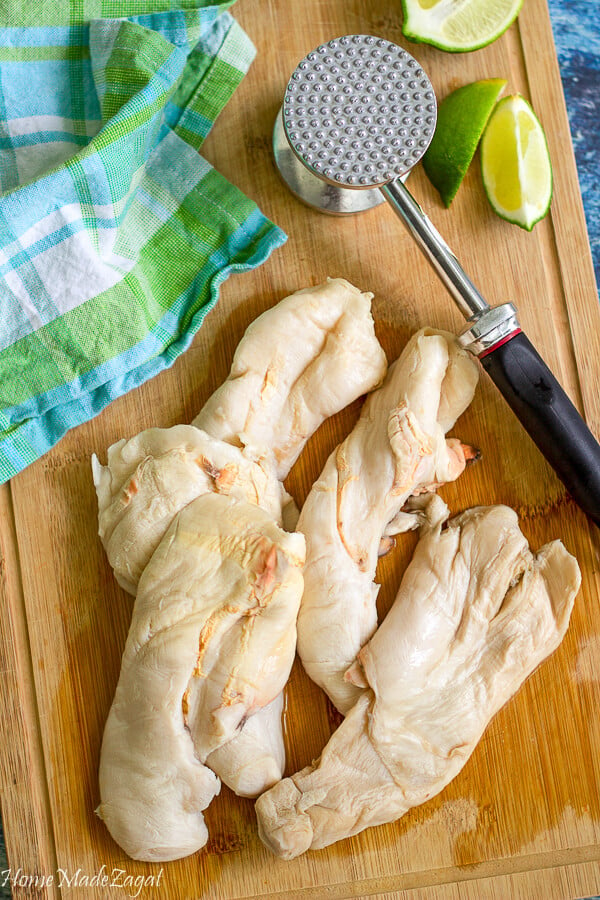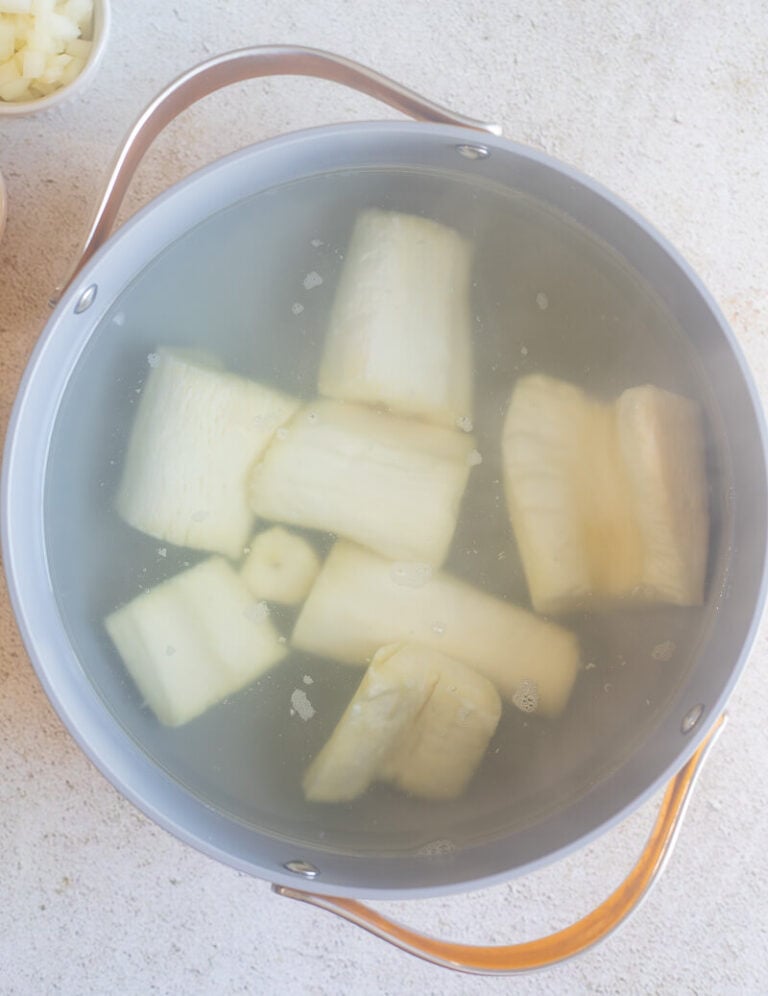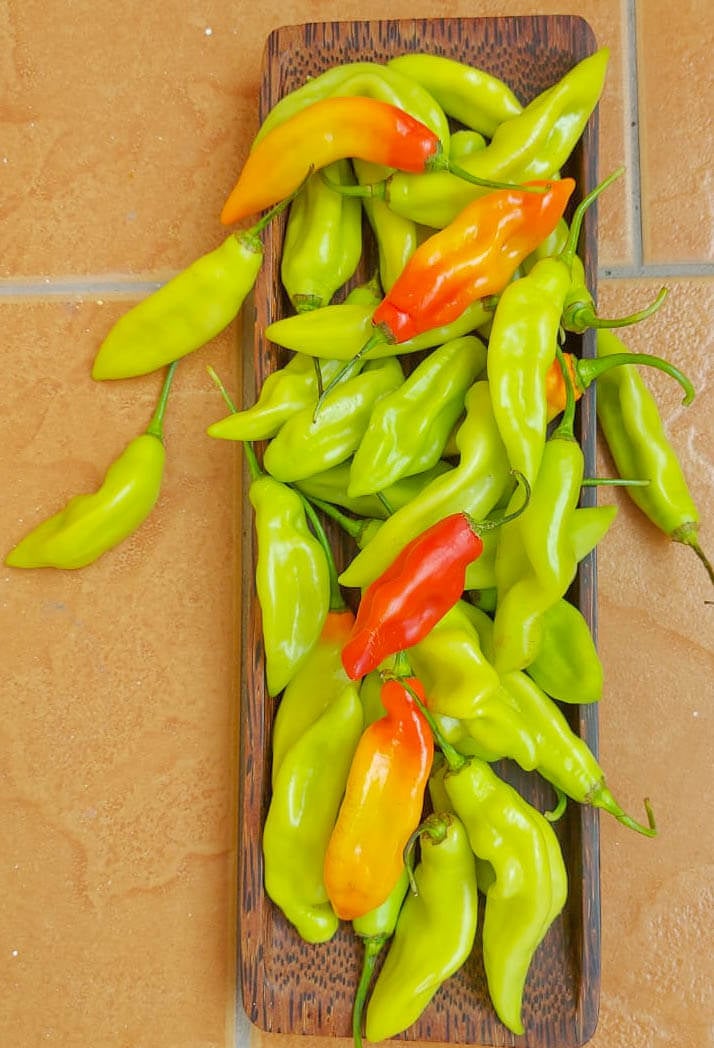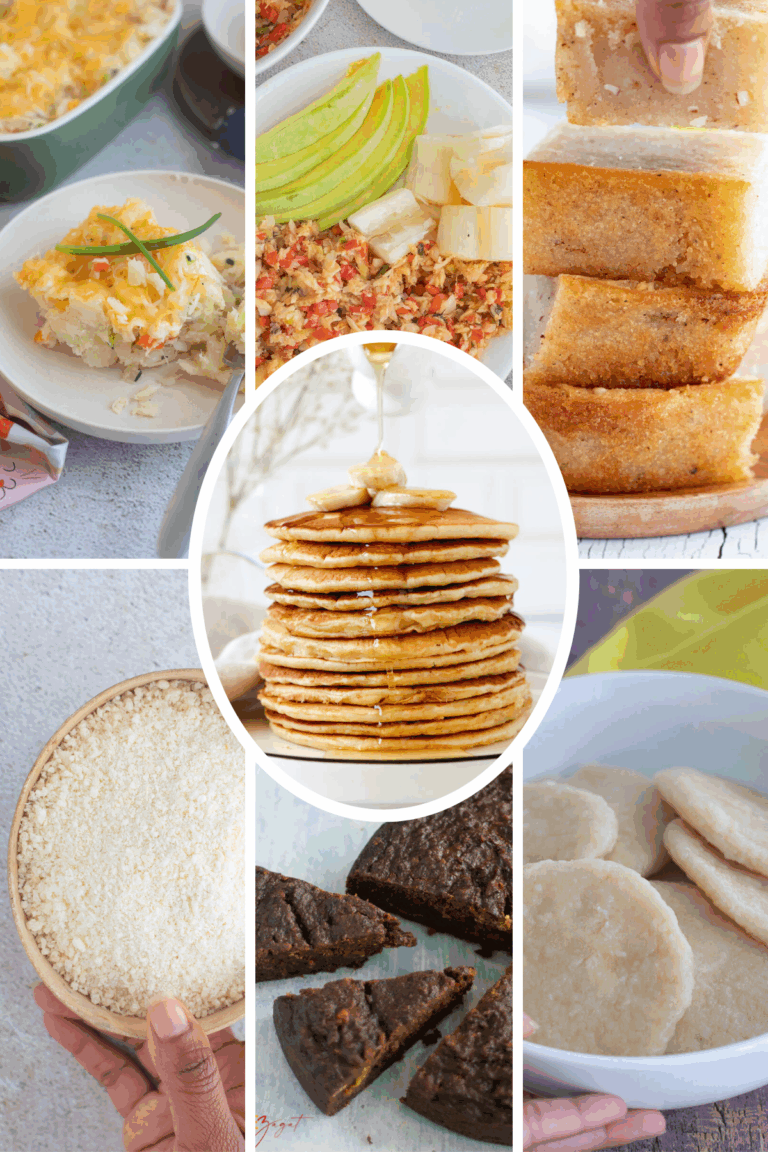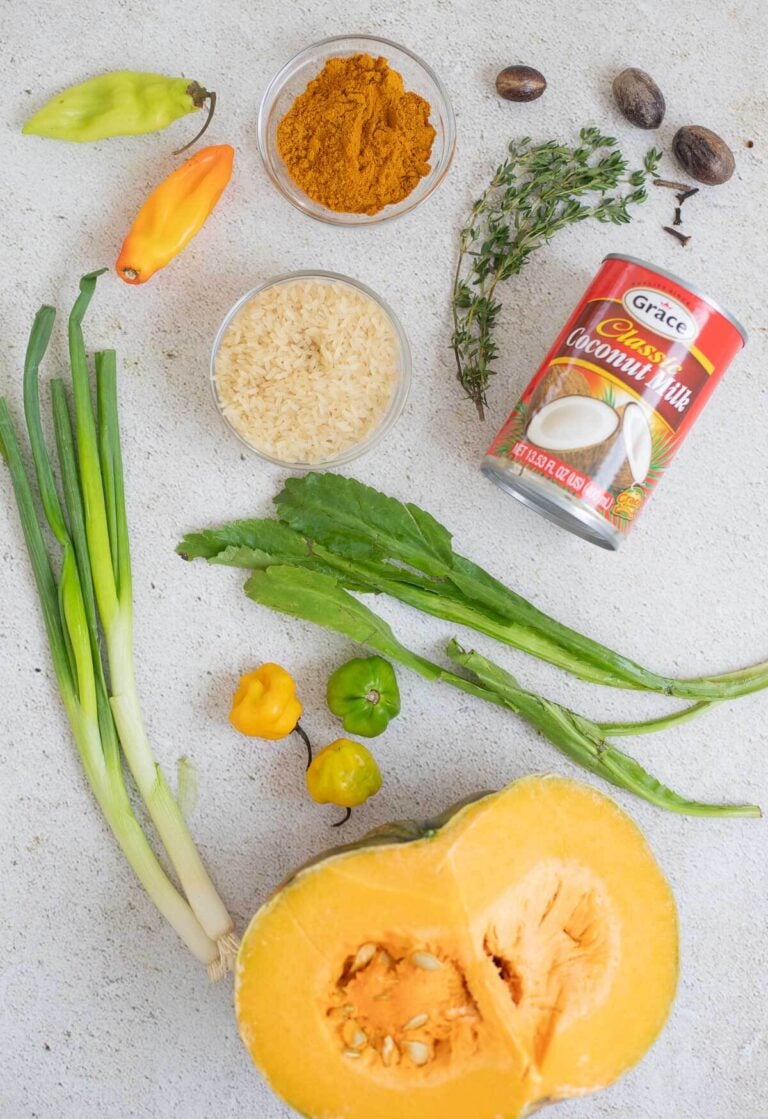What is ground provision?
Caribbean food is something that many people enjoy and want to try to recreate at home for themselves. Our dishes, whether it is the main meal or a side dish, are packed full of flavor. Caribbean-style cooking can be quite different from other cuisines as it relates to the products used to cook, our methods, and processes.
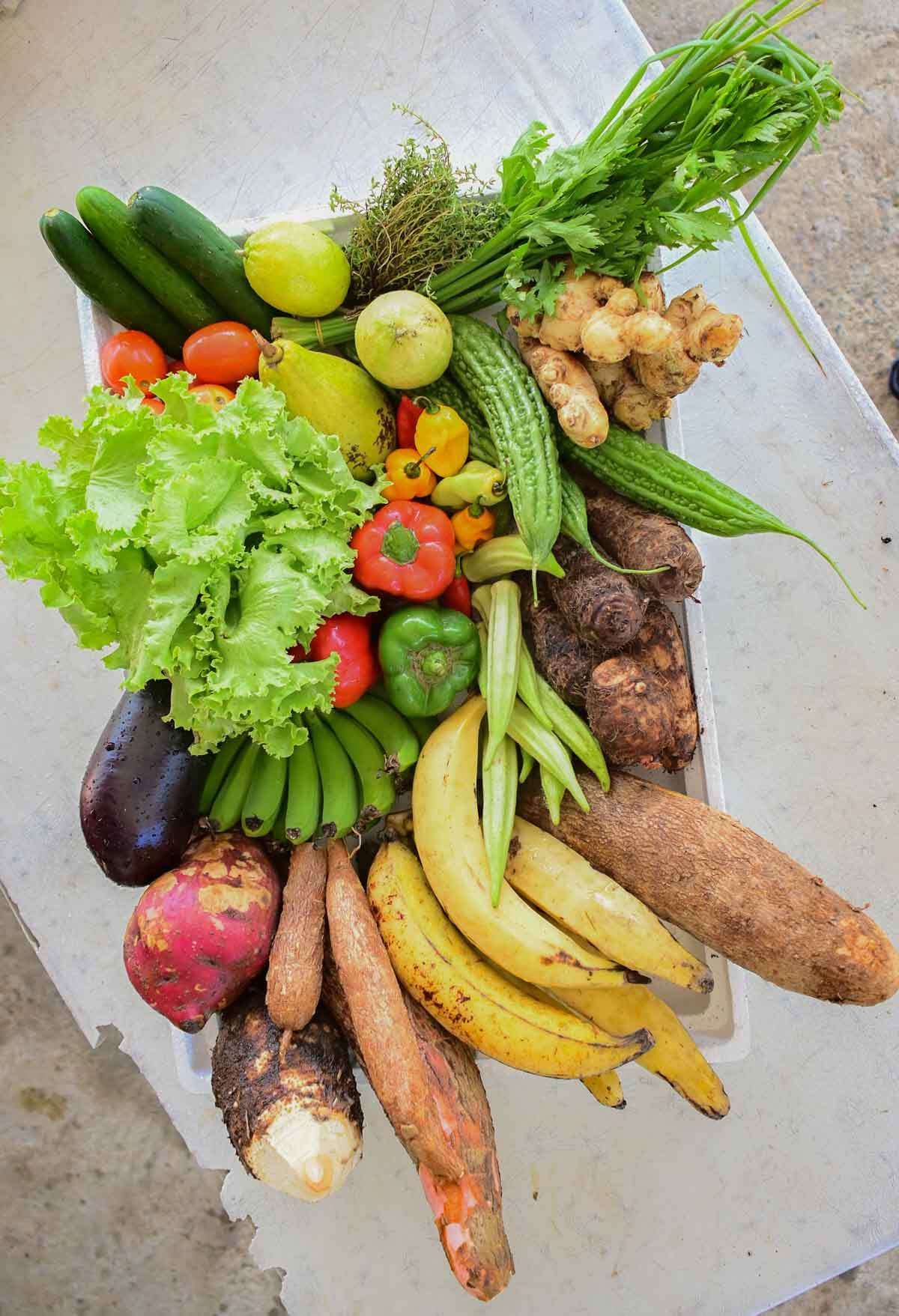
One of our staple foods in Caribbean cuisine (and Latin American) to cook and eat is ground provision. This group of foods can probably be found as a part of any meal, from breakfast to dinner, including drinks and desserts. The uses can range from sweet to savory.
But what exactly is this ground provision?
Read on, and let me give you a more detailed outlook on the ground provision and highlight some details on the more popular ones that make a lot of our favorite side dishes and desserts.
What is ground provision?
As the name implies, ground provision is essentially a category of food that grows in the ground as roots, eg, cassava, and also off the tree as suckers or shoots eg, plantains. Some even grow on vines, eg, pumpkins.
The term usually encompasses all the root vegetables that satisfy the above categories. However, plantains, breadfruits, and green bananas are also considered ground provisions, although they do not grow underground. This is because they are highly consumed and mostly prepared together with other tubular root vegetables.
Ground provision makes up the majority of Caribbean side dishes. When harvested, they can be cooked in many different ways and often accompany other dishes or sides. The main method of cooking, though, and the simplest, is to boil in water until fork-tender.
Consuming ground provisions is very satisfying. They have always been an essential part of the Caribbean diet. But it’s not just a West Indian food group; ground provision is also heavily used in West Africa and many Latin American countries.
Traditionally, manual labor was the main work of island people. Since there was a lot of physical labor, which especially involved cutting and clearing the land for farming, people needed to get sustenance and nutrition, along with being able to enjoy their food. These starchy tubers fulfilled all those needs.
How to cook ground provisions
Traditionally, they are boiled, but you can fry or roast them and add spices and herbs. They are also popularly served with any meats or fish. You can also, at the most basic level, crush or puree as meals for babies and toddlers.
The only shortcoming with these root vegetables is that some need time to peel, but their taste is worth your time.
Now you are seeing untraditional recipes appearing, like making ice cream or using it to make pizza crusts and other doughs.
The most popular ground provisions
A wide variety of ground provisions provides nutrients to our diet. From breadfruit to yams, green plantains, eddoes, tania, dasheen, also known as taro root, pumpkin, green banana, and cassava are just a few.
I will highlight some of the more popular ones, their benefits, and how these starchy vegetables can be prepared.
Plantain
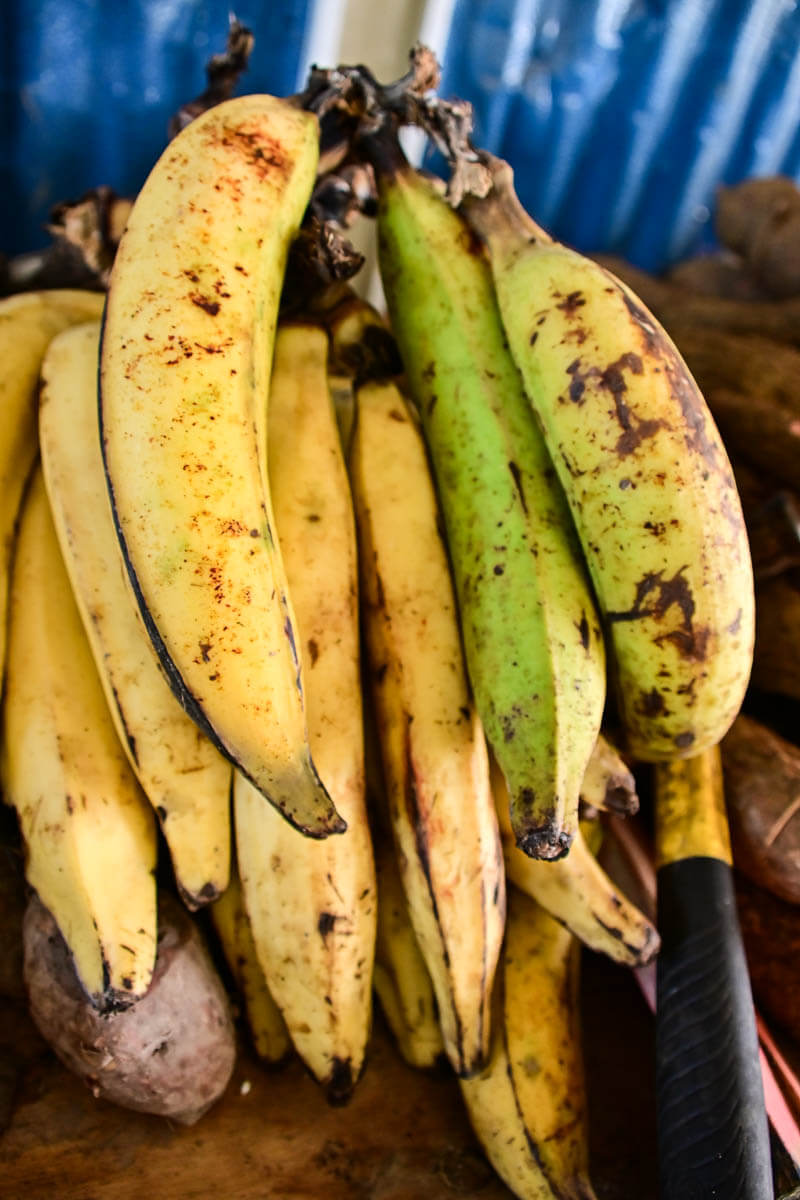
A plantain, to the untrained eye, could be easily mistaken for a large banana. They are part of the banana family and are classed as a fruit, but unlike the banana you might know and love, these need to be cooked.
Much like a tomato is considered a fruit but is used in a savory way, the plantain is the same. It cannot be eaten raw and is tougher to peel as it has a thicker outer skin.
You can cook it in a variety of ways. They have a sweet and aromatic flavor when ripened.
Here are a few different ways to use plantains:
Potatoes
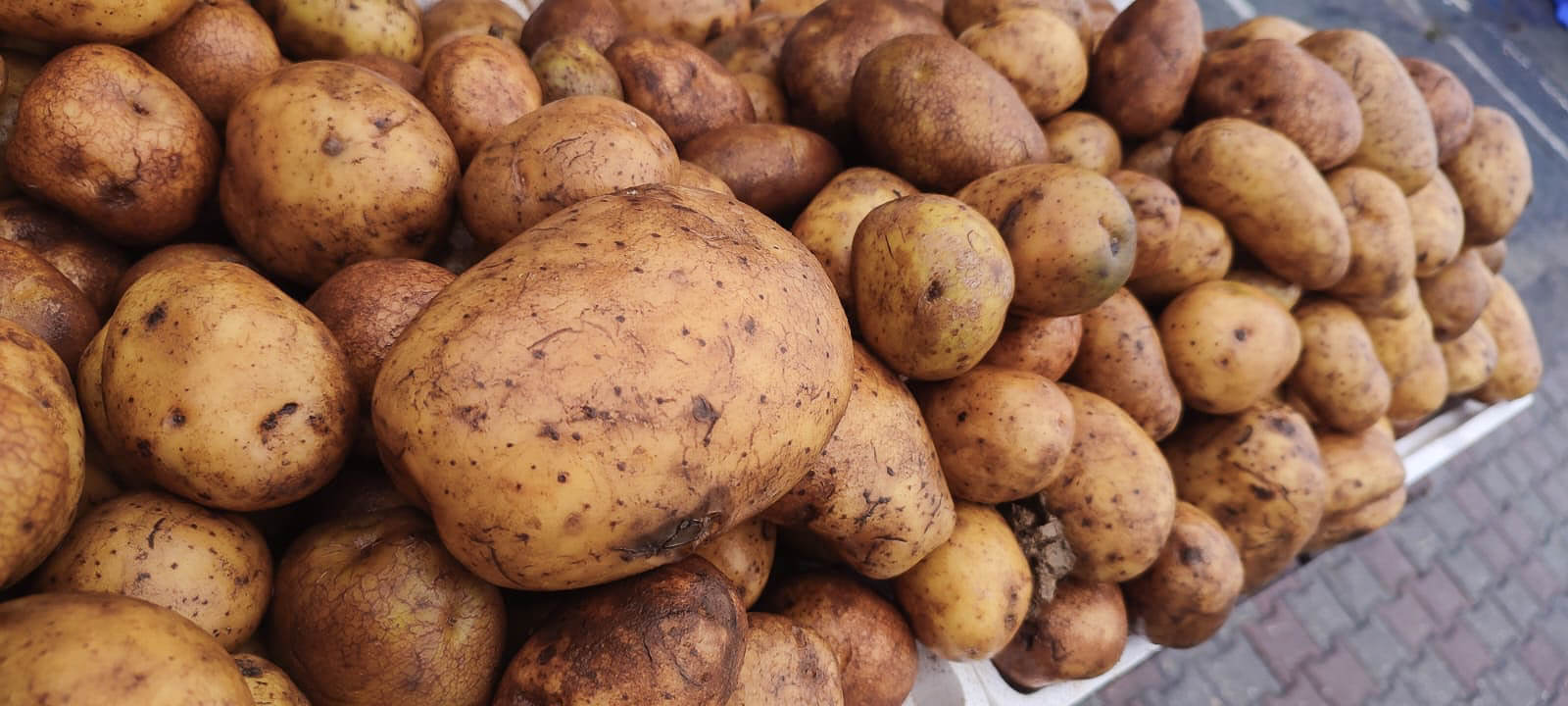
The majority of us will be familiar with russet potatoes and know that they are a unique and filling starchy side dish to have with many different meals. The potato has a bland and starchy flavor, but can easily take on different flavors, whether it is gravy from the main dish itself, as a baked potato, or mashed potatoes. But you can also cook it with spices and herbs
You can prepare potatoes in many different ways; another popular dish is the potato salad or potato pie. But traditionally, as ground provision, the potatoes would be chopped and boiled.
Sweet Potato
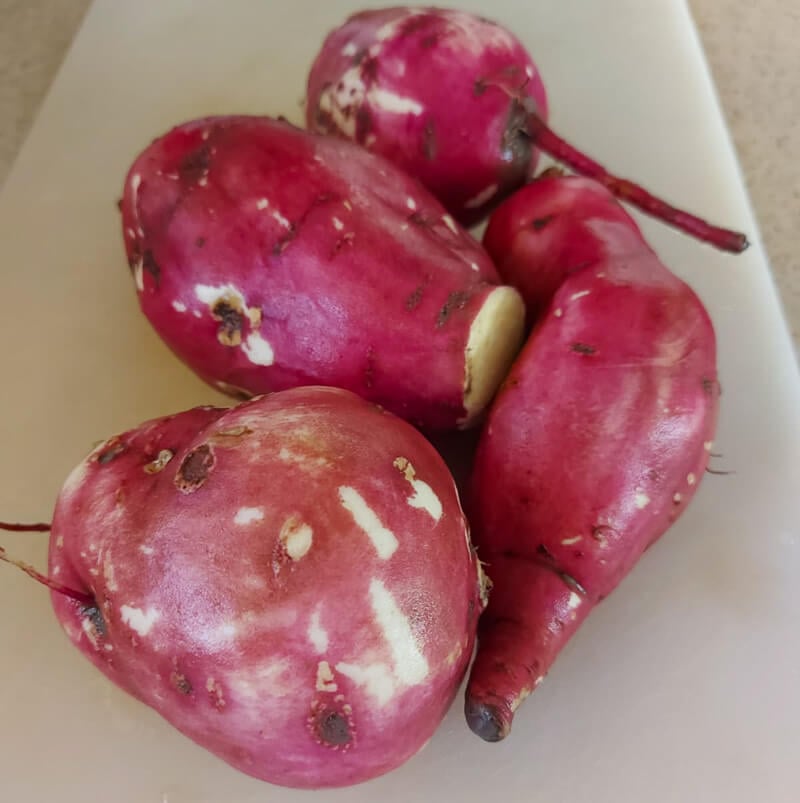
Another variety of potatoes, but one that is different in appearance from a traditional potato. The flesh inside can be orange or light grey in color. It is sweet and softer when cooked.
Just like the ordinary potato, there are a variety of ways in which you can cook the sweet potato – boiled, or mashed, for example. And like the regular potato, it also easily takes on the flavors really well.
Sweet potato pudding is a Jamaican delicacy that really highlights this provision as a dessert.
Often mistaken for a sweet potato, a true yam is a starchy edible root of the Dioscorea genus, and is generally imported to America from Africa. It is rough and scaly and very low in beta carotene.
It has a bark-like rough skin, and the flesh is white or yellow instead of orange in color. However, the flavor is sweet, and it would traditionally be boiled, but this too can be cooked in different ways.
I think I actually see “yellow yams” more than white here in South Florida.
Green banana
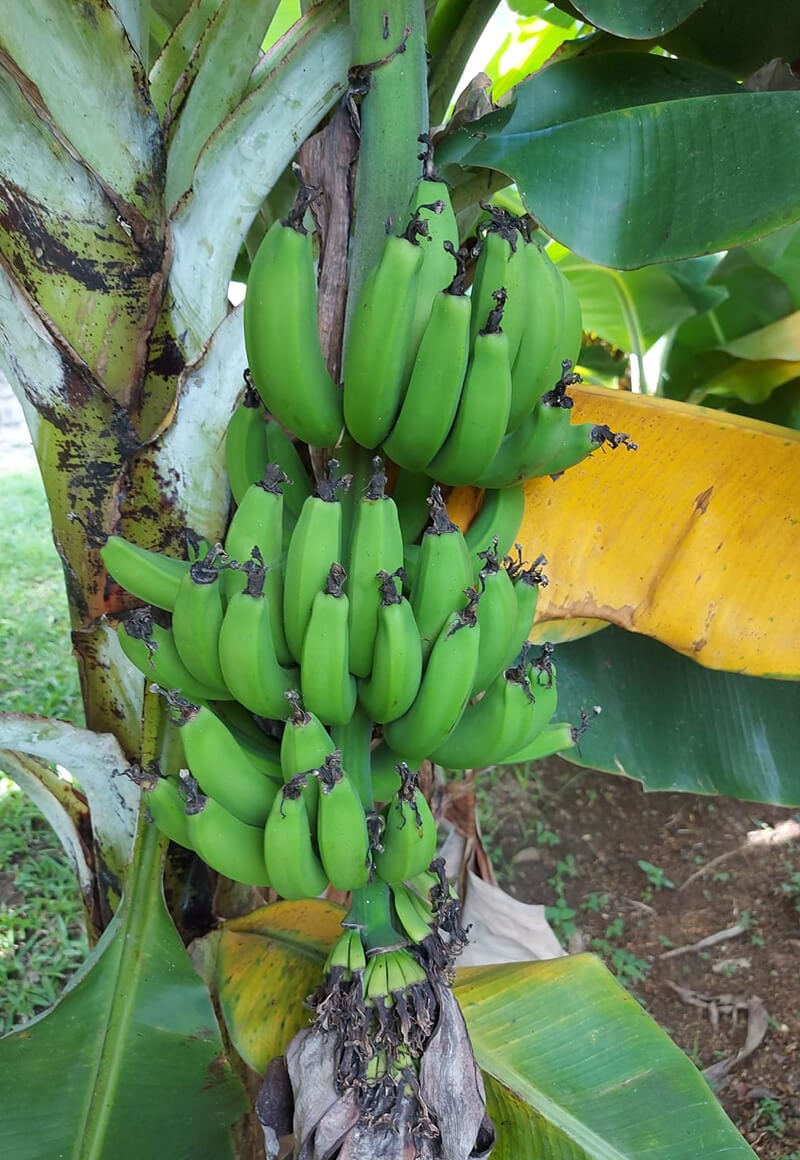
It is purely out of a need to be resourceful that Caribbean people started to cook green bananas. In some Caribbean islands, like Trinidad and Tobago and Dominica, green bananas are called green figs.
These are the same bananas that are eaten as ripe fruit for breakfast or a snack. However, when in the green stage, they are used as a vegetable, like potatoes, and are usually eaten alongside savory dishes.
Some savory dishes with green figs:
Green figs are high in resistant starch and dietary fiber. These help with digestion and also keep you full for longer periods, which in the long run helps with weight management. They are also known to be helpful for persons with constipation, bloating, or infections of the digestive tract.
Besides boiling, there are green banana salads and fries.
Dasheen
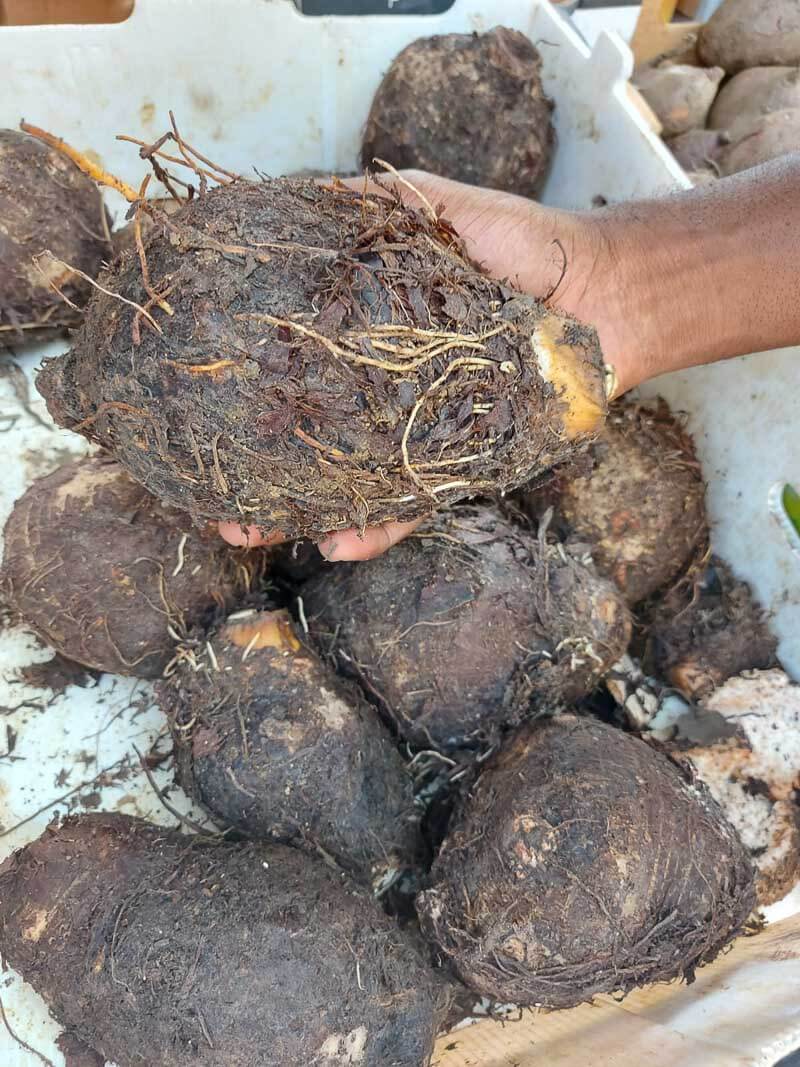
Also popularly known as taro, the dasheen root is a part of the arum family. It has a sweet, nutty flavor. Dasheen must be cooked before eating. It is a good source of fiber, vitamins, and minerals.
It is another one that has complex carbs and helps keep you full longer, which can help reduce the number of calories you will eat in the day.
Dishes you can get from Dasheen besides the traditional boiled method:
- Dasheen ice cream.
- Taro smoothie.
- Dasheen wine.
- Dasheen black cake
- Dasheen chips.
- Dasheen leaves are used to make callaloo.
In Tobago, dasheen is popularly referred to as “blue food”. It is such an important part of our landscape that we actually have a yearly festival called The Tobago Blue Food Festival.
Breadfruit
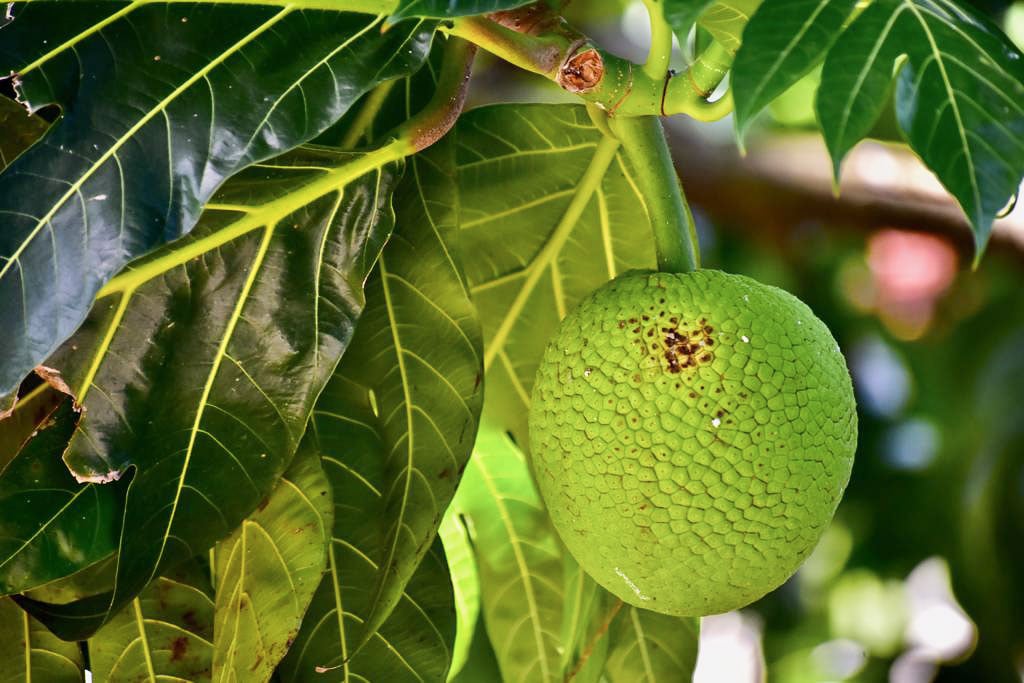
Breadfruit is a large, round, starchy fruit that comes from a tropical tree, which is used as a vegetable and sometimes to make a substitute for white flour. It can be boiled like some of the other ground provisions.
Breadfruit can be eaten at any stage, so it doesn’t matter whether it is ripe or not. However, the flavor and texture vary at different stages. When breadfruit isn’t ripe, it will have a similar flavor to that of a potato; when small and green it is similar to an artichoke. Once ripe, it has a sweeter flavor.
Health benefits include thiamine and niacin, along with protein, potassium, and magnesium.
Recipes for breadfruit:
- Fried breadfruit
- Breadfruit salad
- Roasted breadfruit
- Breadfruit fries
Cassava
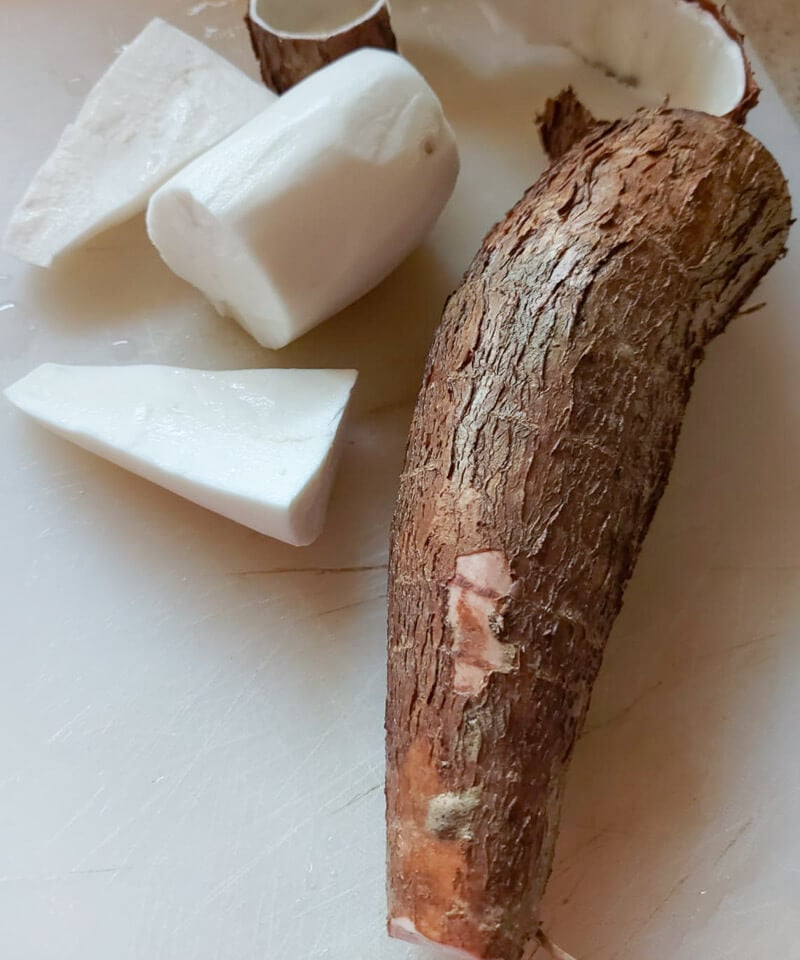
One of my favorites, cassava, is one type whose uses vary across many different food segments. Cassava is also known as yuca. It is a woody-looking shrub. It is full of protein, fiber, and calcium. There are two types of cassava: bitter and sweet.
Cassava cannot be eaten raw as it contains some traces of cyanide, which is toxic to ingest.
Cassava can be found fresh or frozen. Though the majority of the time I encourage the use of fresh ingredients, buying fresh cassava and having it be top quality is difficult. Frozen always gives a better quality product, though the taste is not as intense.
This is also a great one to make into flour and is very popularly boiled and paired with salt fish.
Other recipes you can make with cassava:
- Cassava pone and mixed pone
- Butter cassava
- Cassava balls
- Cassava dumplings
- Cassava pancakes
- Cassava black cake
